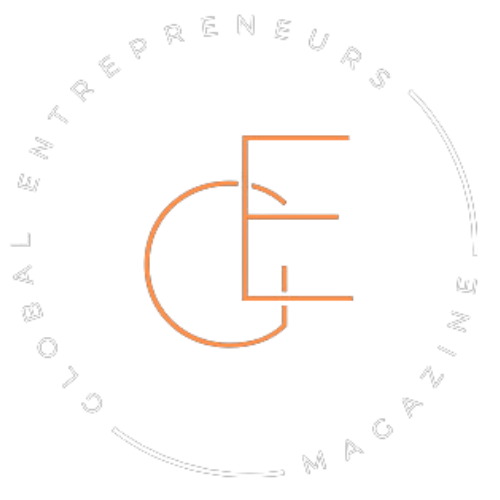Jason had been staring at the screen for two hours. Three dashboards, two spreadsheets, and a Slack thread with six different opinions—none of it made the decision any easier. The data told him to wait. His gut told him to launch.
The team was ready. The product was rough, but promising. Feedback from beta users was glowing, but early engagement metrics looked… confusing. One AI-powered analytics tool flagged potential retention issues. Another forecasted breakout success. The numbers contradicted themselves.
So he did what most founders do when numbers start talking in riddles. He muted Slack, stepped away from the screen, and listened—for that quiet, internal hum. The one that’s hard to explain but impossible to ignore.
This wasn’t about being anti-data. Jason had spent years building a business on hunches, trial runs, and late-night clarity. But things had changed. Now he had tools. Teams. Expectations. Investors. The cost of being wrong had grown.
And yet, he pressed “Go.”
That night, a founder made a decision. Not based on certainty. Not entirely based on insight. But on the strange middle ground where instinct meets machine.
Why instinct still matters
Before the dashboards, before the advisors, before the algorithms chimed in with predictions—there was just a feeling.
That’s how most founders begin. They don’t start with datasets. They start with a sense. A stubborn belief that something should exist in the world and a quiet, persistent itch to make it real.
No metrics told Sarah that her wellness app would resonate with burned-out moms. No algorithm whispered to Eli that he should quit his job and build productivity software in his garage. In the beginning, all they had was instinct—their own understanding of people, gaps they noticed, frustrations they couldn’t shake. They weren’t validating a market. They were answering a personal question: Why hasn’t someone done this already?
And those early calls—the first hire, the scrappy pivot, the painful feature cut—often aren’t about logic. They’re about feel. They’re made in kitchens, not boardrooms. They’re built on human reads of trust, timing, and what the moment seems to need.
Instinct is messy. It doesn’t come with charts. But it’s not blind, either. It’s built on lived experience, pattern recognition, emotional intelligence. It’s the part of you that knows what “feels off” when everyone else is nodding.
And for many founders, it’s the only thing that got them through the days when no one else believed it would work.
When the data enters the room
Things change after the first wave of traction. Once the product has users and the bank account has more than fumes, something new starts arriving in the founder’s inbox: numbers.
Open rates. Conversion paths. Churn graphs. AI-generated insights color-coded for urgency. What used to be gut calls now come with a readout, a graph, and a prompt asking, “Want to optimize this funnel?”
At first, it feels like backup. Proof that things are working. The heatmap shows people really are clicking what you hoped they would. The AI tool spots patterns in customer behavior you hadn’t considered. Suddenly, decisions come with support.
But then, the flood. Every tool wants to tell you something. Some say growth is stalling. Others flag “increased activation velocity.” You start needing a translator to understand your own company. And somehow, the more insights you gather, the less clear the answers become.
That gut feeling you used to trust? It’s now one voice in a crowded room. And most days, it’s the quietest one.
The tug-of-war: gut vs. data
Annie ran a clothing startup that prided itself on slow fashion—handmade, sustainable, honest. But sales had dipped. Her marketing lead pulled up AI-driven recommendations: introduce flash sales, push urgency, trigger more impulse buys.
The strategy made sense—on paper. The models showed potential for a 40% lift. But Annie felt sick thinking about it. The whole brand was built on intention, not hurry. Rushing people didn’t fit.
She pushed back. The team hesitated. The tools insisted.
She compromised, running one small test. The data won—temporarily. Sales jumped, but customer feedback soured. Return rates climbed. Her gut had been right, just not loud enough the first time.
It’s not always that simple. Sometimes the data does see what you can’t. Ben, a founder in the fintech space, ignored a churn warning flagged by his AI tool. It predicted a mass drop-off after a UI redesign. He didn’t believe it. His users loved the look. Until they didn’t. Usage dropped, complaints spiked, and the fix took months.
There’s no perfect side to bet on. That’s the weight founders carry. Every decision feels like a choice between instinct and intelligence. One too early, the other too rigid. And in the middle: risk.
The sweet spot: founders who found balance

Mira doesn’t look at dashboards first. She checks in with her team. Listens. Takes in the tone behind the numbers. Then she opens her AI tools—not to be told what to do, but to see what she missed.
It wasn’t always that way. Early on, she swung hard toward intuition. Then the company grew. Investors came in. Decisions got bigger, and consequences louder. She didn’t throw her gut out—but she stopped treating it like gospel.
Now, she treats AI like a second opinion. Her instincts draft the plan. The data pokes holes in it. Sometimes it confirms what she already suspected. Other times it rewrites everything.
Founders who last seem to develop this rhythm. They don’t rely on AI to think for them. They use it to sharpen their thinking. They look for friction—places where what they feel and what the data says don’t line up. That’s where the insight often lives.
The best ones learn to ask: What’s this number not telling me? What’s my instinct missing?
It’s not a matter of choosing one voice over the other. It’s about training them to talk to each other.
When intuition saves the day
Ravi was under pressure. His startup had just secured a funding round, and his investors wanted expansion—fast. The AI platform they used projected strong returns in Germany. The dashboard lit up with green signals: high demand, low competition, perfect conditions.
But Ravi hesitated.
He had just come back from a trip to Southeast Asia. While the models said Germany, his conversations told a different story. He’d met shop owners in Manila, digital marketers in Jakarta, and a growing wave of young consumers hungry for what his brand offered. No one in the data room was talking about them. Yet everything about the region felt alive—familiar, even.
So he said no to Germany.
Six months later, Southeast Asia became their biggest growth driver. Word-of-mouth exploded. Local partners came onboard quickly. Expansion felt like a conversation, not a gamble.
The investors hadn’t seen it coming. The AI hadn’t either.
But Ravi had.
There are moments when the data says wait—and your gut says move. You won’t always be right. But when you are, it sticks with you. Not because it proves instinct is smarter, but because it reminds you that instinct is still in the room, still worth listening to.
When machine insight becomes a co-pilot
Dan never wanted to outsource his decisions. What he wanted was perspective.
He built his startup’s internal tools to surface signals, not shout instructions. His AI setup didn’t spit out yes-or-no answers. It highlighted anomalies. Flagged shifts. Nudged attention toward patterns he might have missed. But the final call? Always his.
He called it “the cockpit.” Everything he needed was there—but he still had to fly the plane.
Founders like Dan aren’t trying to replace their thinking. They’re building systems that support it. Their dashboards don’t just show metrics—they ask better questions. Instead of drowning in suggestions, they customize what their tools watch for. They treat machine insight like a second brain, not a better one.
Some days, the data keeps them from making emotional decisions. Other days, it pushes them to look twice before rejecting a hunch. It’s not about winning an argument between gut and graph. It’s about having both voices at the table—and knowing when to trust which one.
Founders who get this right don’t see AI as a shortcut. They see it as a companion. A good one doesn’t just tell you what’s happening. It helps you see what matters.
How to blend both
Start with the question, not the answer.
Founders who blend instinct and AI well don’t rush to the dashboard for direction. They ask themselves what they’re sensing first. What’s bugging them? What’s exciting them? Then they use the data to pressure-test those feelings. Confirmation is useful. Contradiction, even more so.
Build tools that speak your language. Don’t just copy someone else’s stack. Set up your AI and analytics to highlight the stuff you actually care about—not just what everyone else is measuring. If you’re driven by community engagement more than CAC, make sure your insight engine reflects that.
Keep space for silence. Every founder needs time to think before the noise kicks in. Make decisions without a thousand tabs open once in a while. Give your gut time to surface before data crowds it out.
Talk it out. Some of the best clarity comes when you explain a data point to someone else—or try to justify a hunch. Say it out loud. See if it still makes sense.
And most of all, don’t treat your intuition like a liability. It got you this far. The goal isn’t to mute it. The goal is to make it sharper.
The human behind the metrics
Jason launched the product that night. The metrics were murky, but his gut was clear. It didn’t tank. It didn’t skyrocket either. But it reached the right people, sparked the right conversations, and laid the groundwork for what came next.
And that’s the part the dashboard didn’t capture.
Behind every chart is a human. A founder reading between the lines. A voice second-guessing itself in the quiet. A mind making decisions in the fog.
AI can count the clicks. It can spot the churn. It can even guess what someone might want next. But it can’t feel momentum. It can’t sense tension in a room. It doesn’t know what it’s like to bet everything on a blurry signal only you seem to see.
That’s what founders bring to the table. That mix of instinct and observation. Of courage and calculation. Of knowing when to trust the data—and when to trust yourself.
Because building something from nothing will always require both.




